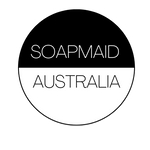
The Benefits of French Green Clay in Cosmetics
French Green Clay: The Ultimate Detox & Skin-Balancing Mineral
Illite clay from ancient French seabeds — rich in magnesium, silica, and iron oxides for face, body, and soap

French green clay — also known as illite or sea clay — is a powerful natural ingredient with a 2,000-year legacy in skincare. Mined from ancient seabeds in France, this emerald-green powder is packed with minerals (magnesium, silica, calcium, potassium) and renowned for its absorbent, detoxifying, and balancing properties. From acne masks to mineral-rich soaps, it’s a must-have for Australian natural formulators.
What is French Green Clay?
Formed from decomposed marine vegetation and volcanic ash, French green clay gets its colour from iron oxides and plant matter. Its high cation exchange capacity (CEC) allows it to bind toxins and impurities like a magnet.
Mineral Composition (per 100 g)
- Silica: 48–55% — strengthens skin barrier
- Magnesium: 3–5% — hydrates, reduces inflammation
- Calcium: 2–4% — supports cell renewal
- Iron Oxides: 5–7% — natural green pigment
5 Key Skin Benefits
- Deep Detox: Absorbs toxins, heavy metals, excess oil
- Gentle Exfoliation: Removes dead cells without micro-tears
- Anti-Inflammatory: Soothes eczema, psoriasis, rosacea
- Oil Control: Balances sebum — ideal for acne-prone skin
- Circulation Boost: Stimulates microcirculation for glow
Uses in Cosmetics & Soap
1. Detox Face Masks
Green Clay Purifying Mask
- 15 g French Green Clay
- 30 mL Rose Hydrosol or Water
- 3 drops Tea Tree Oil
- Mix into smooth paste
- Apply to clean face
- Leave 10–12 min (until tacky)
- Rinse. Use 1–2x weekly
2. Cleansers & Scrubs
Add 5–10% to gel cleansers or powder exfoliants.
3. Body Wraps
Mix with seaweed powder for cellulite-reducing wraps.
4. Bath Products
Add 50–100 g to bath salts for full-body detox.
5. Hair & Scalp
Use in pre-shampoo masks to absorb oil and soothe dandruff.
6. Soap Making
Add 1–2 tbsp per 500 g oils at trace for natural green colour and gentle cleanse.

Ultra-Fine | Cosmetic Grade | Australian Stock
